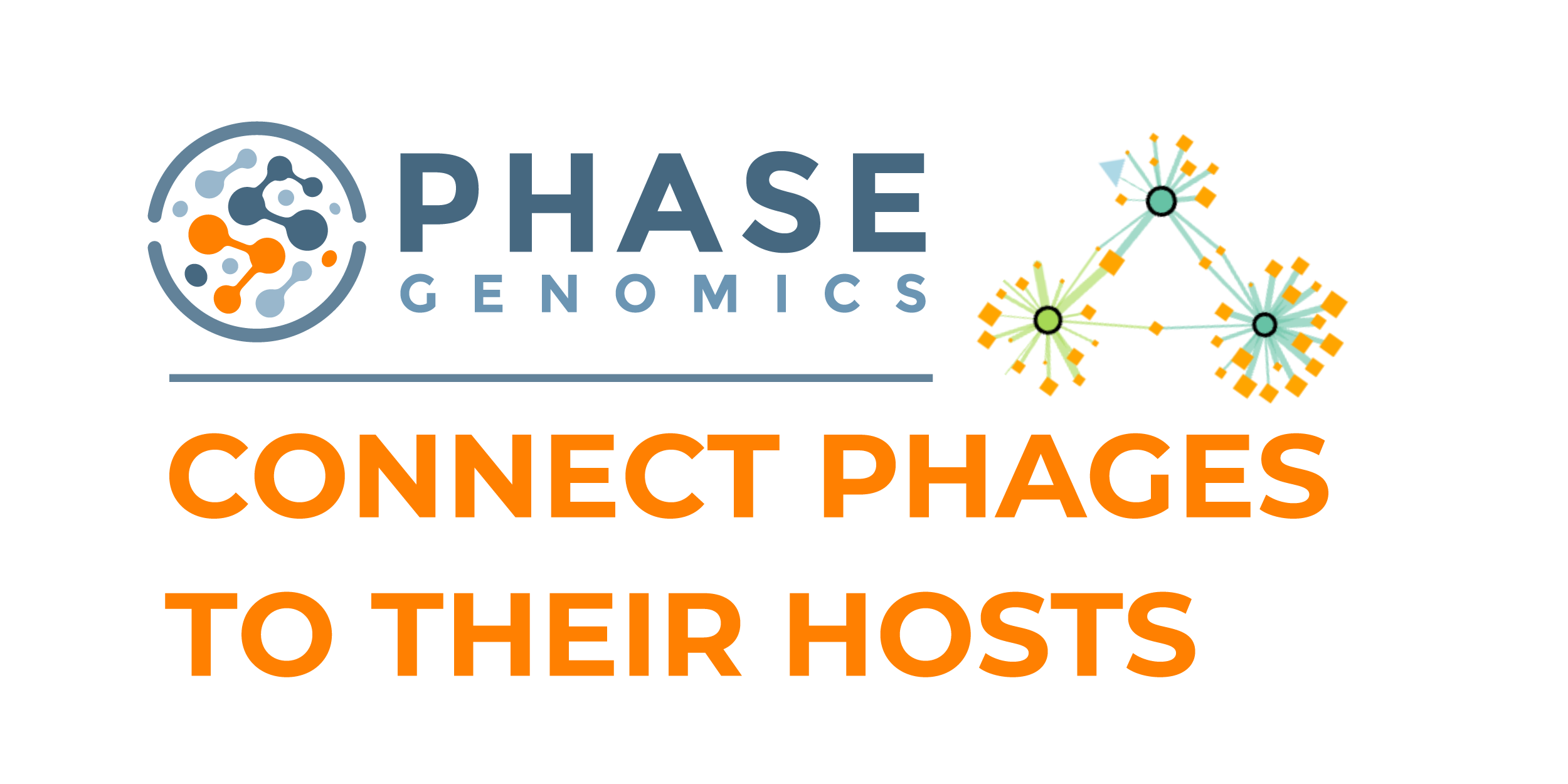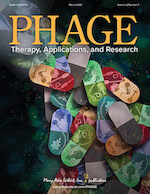Hello everyone!
It’s Phage Picks time! The theme of this week is ‘bread and butter’ — what are some bread and butter techniques for your phage lab, that you can rapidly adopt to dial in your quality/ease of work? The two papers I’m picking today surround solid yet simple methods for two major foundational things you will likely do repeatedly in a phage lab — producing/purifying phages, and quantifying/quality checking them.
One is my favourite methods paper of all time — Phage on Tap. I had to double check I hadn’t already chosen it as a Phage Pick! This paper is my favourite go-to paper for purifying any given phage. It’s lab-scale (small cultures), but high-purity (high enough to go into patients if you needed it to). The octanol method for removing endotoxin is still one of my favourite methods — reliable and extremely low-cost (you don’t need special equipment).
The other paper is one I haven’t personally tried, but I find myself telling people about all the time (and constantly telling myself to do this for all my favourite phages). Essentially it covers qPCR of phages, relating that to plaque assays, and monitoring that ratio for each phage as a way to have a holistic view of its quality/freshness/health. I think all phage labs should ultimately be striving to have PCR primers for their main phages, be checking titres this way (as well as through plaque assays), and using this combo of methods as a periodic quality/integrity check for their phages. If qPCR shows higher phage numbers than plaque assays, maybe you’ve got a degrading/less-than-fresh sample. If they’re staying constant, maybe you’ve got a happy, extra-stable phage! I’m not saying I currently do this, but I aspire to, and this paper is never far from my brain.
Also, beyond qPCR, even regular PCR would be a fabulous addition to routine phage quality checking, and I think we forget that this is so readily available to us. Instead of resequencing phages when we suspect that genetic drift is happening, or that a contaminant has been introduced, or when we’re not sure if two plaque morphologies in the same sample are two different phages or not, we could just be doing a PCR test to verify we get the band we should get for that phage. It’s not everything, but it’s something, and once you have the primers, it can be something you routinely check each time you make a new batch of phage.
Anyway, I hope you enjoy these two papers, and/or file them away in PDF form for a rainy day! Also, if there’s a methods paper you like, where you can say ‘I’ve used this and it works’, please email me! I’d love to feature more papers like this. A methods paper that truly works is gold — we should tell each other about them! (And write to the authors and tell them too — getting an email like that from a fellow scientist who actually read and used your paper is also gold).
Lastly, at the end of this issue, we’ve also got a bonus pick from Jan — what is optogenetics, and why hasn’t it changed the world yet?
Phage on tap–a quick and efficient protocol for the preparation of bacteriophage laboratory stocks
What is it about?
This paper describes a method called “Phage on Tap” (PoT) for quickly and efficiently preparing high-titer, homogeneous phage stocks for laboratory use. The method involves phage propagation, purification by filtration and chloroform treatment, concentration by ultrafiltration, removal of endotoxin using octanol, and storage in banks at 4°C. It can produce clean, high-titer phage stocks (up to 10^10-10^11 PFU/mL) within just 2 days, with limited equipment (just standard things most microbiology labs have) compared to 5+ days for traditional methods.
Why I’m excited about it:
- The PoT method is straightforward, fast, and efficient, allowing researchers to generate high-titre, homogeneous phage stocks quickly, without the need for specialized equipment.
- It includes steps for endotoxin removal, which is important for using phages in eukaryotic systems (from cell culture and immunology experiments to human patients).
- The method is extremely well-laid out/described, and it works almost every time I’ve used it, across many phages!
Overall, this protocol addresses key challenges in preparing phage stocks for research, is very well adapted to researchers in academia, and extremely clearly communicated. It could/should become a standard, default method (at least to start with) for phage biologists.
Source: Bonilla, N., Rojas, M. I., Cruz, G. N. F., Hung, S. H., Rohwer, F., & Barr, J. J. (2016). Phage on tap–a quick and efficient protocol for the preparation of bacteriophage laboratory stocks. PeerJ, 4, e2261. DOI: 10.7717/peerj.2261
Development of a qPCR platform for quantification of the five bacteriophages within bacteriophage cocktail 2 (BFC2)
What is it about?
This study developed a method using quantitative PCR (qPCR) to quickly and accurately count the number of phages in a cocktail of 5 different phages called BFC2. For each phage, they compared qPCR counts to the counts they got using plaque assays, the phage field’s gold standard for phage counting.
Key findings:
- The qPCR method could accurately detect and count all 5 phages in the BFC2 mixture
- qPCR was faster (3 hours vs 2 days) and less work than plaque assays
- As expected, qPCR gave higher phage counts than plaque assays (since it detects all phage DNA, not just active phages)
- The ratio between qPCR and culture counts was consistent for each phage type (!)
- qPCR was more reproducible between different operators than the culture method
Why I’m excited about it:
This paper takes phage quantification from 1-dimensional to 2-dimensional. Using qPCR for phage quantification is not a novel concept in itself, but they describe doing this systematically for a set of phages, and specifically looking at the ratio for the two across the phages.
Being able to quickly determine phage concentrations is important for quality control in making therapeutic phage preps, quality control during phage research projects in general, and for monitoring phage levels during phage therapy. And bringing in a second method (and specifically looking at the relationship between the two methods) gives a fuller picture of not only phage quantity, but phage quality.
Also, the fact that the ratio looks to be phage-specific was really cool to me — this suggests you can use this as a fingerprint/a rapid check to confirm the identity/freshness/stability of your phage. Ratio off? Maybe the phage isn’t behaving like it should — maybe it’s not a fresh batch. Or maybe a contaminant was introduced?
While the plaque assay method is still needed to check if phages can infect bacteria strains (and is the only readily accessible, reliable method for counting the ACTIVE phages in your solution — at least under the conditions you’re testing), qPCR offers big advantages for rapid quantification of phage stocks. It makes a ton of sense as a complement to plaque assays, and should be used routinely to monitor stocks.
P.S. When I was at Phage Australia, I wrote a couple of blog posts on phage qPCR to monitor phage levels during phage therapy: part I and part II.
Source: Duyvejonck, H., Merabishvili, M., Pirnay, JP. et al. Development of a qPCR platform for quantification of the five bacteriophages within bacteriophage cocktail 2 (BFC2). Sci Rep 9, 13893 (2019). https://doi.org/10.1038/s41598-019-50461-0
— Jess
Bonus: Optogenetics could change the world. So why hasn’t it?
This essay from a Stanford undergraduate student covers optogenetics, what it promised for many years, and why it never took off as everyone hoped it would. Optogenetics is basically a way to use light to control bacteria, similar to how our human eyes respond to light with photoreceptors, converting light into chemical signals.
Optogenetics has been a promising avenue for years (for example in neuroscience and medical treatments), but because of continued difficulties in gene therapy (and delivering light to specific body areas), it’s never reached its promise.
This article covers the challenges, road blocks, and explores whether it’s even worth exploring. It’s an inspiring Sunday afternoon read!
Article: https://www.owlposting.com/p/optogenetics-could-change-the-world
— Jan







